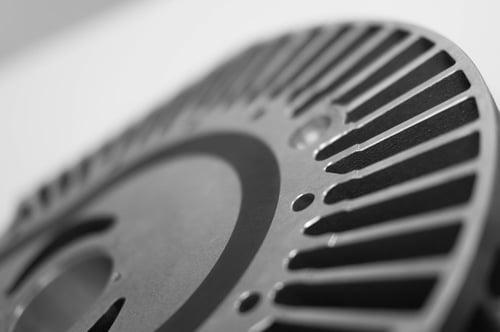Choosing the best aluminium alloy for metal casting
Published - 4th Apr 2018
In previous blogs, we’ve explained that aluminium alloys are used in most of our sand casting work due to their; excellent strength-to-weight ratio, good corrosion resistance, electrical/thermal conductivity and high ductility. These alloys contain aluminium and trace amounts of metals such as copper, magnesium, silicon and zinc, to enhance these properties.
At Haworth Castings, the most popular aluminium alloys are LM25 and LM6 – with the ‘LM’ prefix being a standard code to reflect the chemical composition and varying proportions of the different trace metals.
In this blog, we will be comparing the respective benefits of these two commonly used alloys.

LM6 or LM25?
LM6 is widely used in many marine components since it has excellent corrosion resistance – superior to LM25. This is due to the high silicon content. Silicon is the single most important alloying element used in aluminium casting. It has excellent ‘castability’, offering high fluidity, low shrinkage and a low density – which can help to reduce the weight of the component.[1].
With greater fluidity, LM6 stays in its molten state for longer than LM25, which helps the metal to reach the extremities of the mould cavities. This reduces the risk of defects such as misruns.
However, LM6 is difficult to machine due to the high silicon content. LM6 can be used to add simple features (such as drilled holes) but not for more intricate features (such as close tolerance holes).
High ductility
LM6 is also one of the most malleable of the aluminium alloys. This is an important characteristic for many marine applications, such as boat propellers, which must operate efficiently and have some malleability, without breaking, in harsh environments.
LM6 is also widely used in a range of land applications where dampness and moisture may be an issue.
LM25 – a good all-round choice?
LM25 is a good choice for castings where high strength is required. The high magnesium content means that LM25 can be heat treated to increase its hardness and strength significantly – unlike LM6.
In its heat-treated state, LM25 offers better machinability than LM6 so it is an excellent choice where complex details and features need to be added to a cast component. LM25 can be anodised or alochromed to increase its corrosion resistance.
Given these properties, it is not surprising that LM25 is seen as a good general, all-purpose alloy. It is widely used in the automotive industry for components such as torque wrench components and cylinder heads. But, it is also a popular choice in the chemical, electrical and many other industries.
So, in conclusion, both LM6 and LM25 have their place in casting work. The choice of casting alloy is determined solely by the project specifications and our customer requirements.
Want to find out more about Haworth Castings? Give us a call today on +44 (0)1794 512685 or email us: sales@haworthcastings.co.uk
[1] Reviews on the Influences of Alloying Elements on the Microstructure and Mechanical Properties of Aluminium Alloys and Aluminium Alloy Composites, R.S. Rana, Rajesh Purohit and S. Das, International Journal of Scientific and Research Publications, June 2012





